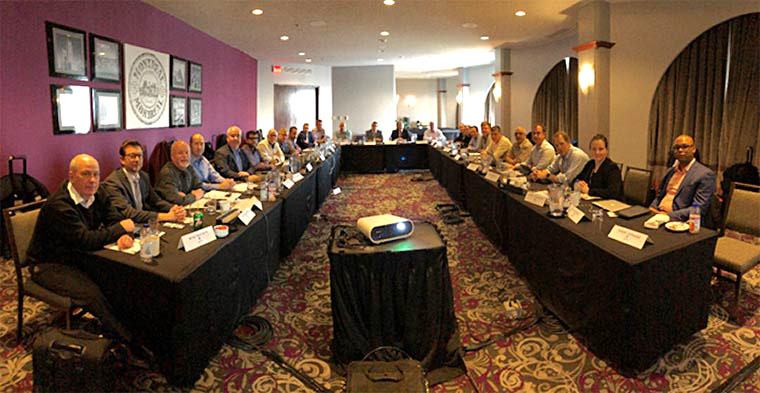Pilots in Canada Gain Long-Awaited Fatigue Rules
By Corey Kuhn, Contributing Writer

The Safer Skies Coalition Working Group met in Montréal, Qué., to discuss the implementation of fatigue risk management systems.
After more than eight years of sluggish progress, on Dec. 12, 2018, Transport Canada, the regulatory agency overseeing aviation safety, finally announced new flight- and duty-time regulations for airline pilots in Canada. The new rules are a vast improvement over the current regulations and will help to improve aviation safety across the country. ALPA played a key role throughout this long process and worked diligently for years to secure updated, science-based regulations, a top safety issue for flight crews in Canada.
For many years, Canada’s flight- and duty-time regulations were acknowledged by aviation industry experts as inadequate for ensuring that pilots are well-rested when they fly. Despite ALPA’s persistent urging, Transport Canada was slow to adopt new rules, which is why in 2017 ALPA and pilots from across Canada called on the government to enact stronger fatigue rules for all Canadian airline pilots. The Association also engaged in a public-awareness campaign to alert Members of Parliament that it was past time for needed changes to protect pilots and passengers. Through the Safer Skies coalition, thousands of Canadian citizens joined pilots by signing a petition that outlined specific demands related to fatigue and flight safety. In addition, the Safer Skies website received more than 15,000 visits and was seen by more than 2.5 million people through social media.
The recent long-overdue announcement is a result of nearly a decade of work, and ALPA was the only pilot group representative invited to provide remarks at a recent press event in which Minister of Transport Marc Garneau unveiled the new regulations.
“Canada has taken a significant next step to align itself with the rest of the world by adopting these new rules,” said Capt. Tim Perry, ALPA Canada president. “We look forward to continuing our working relationship with the government and other industry stakeholders to ensure that Canada maintains itself as a world leader in aviation safety.”
While the regulations announced don’t address all of ALPA’s concerns and recommendations, they’re a significant improvement over the current rules. One of the most significant deficiencies is the proposed four-year implementation timetable for Parts 703/704 carriers (airline operations with up to 19 seats). Part 705 carriers (airline and helicopter operations with 20 or more seats) must implement the new rules within two years. ALPA has been vocal in its opposition to this timeframe as it creates two classes of safety for the Canadian public and pilots.
Also concerning is that the language pertaining to the proposed fatigue risk management system (FRMS) is fraught with significant problems and requires further study and consideration before it becomes law. To better understand the FRMS process and develop a coordinated strategy moving forward, ALPA hosted the Safer Skies Coalition Working Group on January 15–16 in Montréal, Qué., to bring together ALPA Canada master executive council representatives, Safer Skies coalition members, and Transport Canada to discuss the work needed to ensure that pilot concerns are addressed and that safety isn’t compromised.
With the collective goal of ensuring that all operators and pilot groups that utilize FRMS are on the same level playing field and working off the same FRMS template, Capt. Brian Noyes (United), ALPA’s Flight-Time/Duty-Time (FTDT) Committee chair, joined 27 pilots and ALPA staff representatives to address issues that included the implementation of FRMS as they apply to the new rules. Transport Canada also attended the meeting and gave representatives a clearer idea of the issues surrounding FRMS implementation and the critical role pilots have in the implementation and ongoing utilization of FRMS.
“We’re confident that with the continued support of pilots across the country, we’ll be able to address the shortcomings in the long-awaited flight- and duty-time regulations, as well as provide a workplace for coalition pilots that reduces and manages fatigue effectively,” Perry said.
ALPA will continue to work closely with operators and Transport Canada to ensure that, as FRMS exemptions are developed to address variances from prescribed limits, pilot representatives are involved every step along the way.
While these new regulations will improve safety, ALPA will remain engaged with industry and government stakeholders to advocate for future enhancements to ensure a safe and robust commercial aviation system in Canada.

